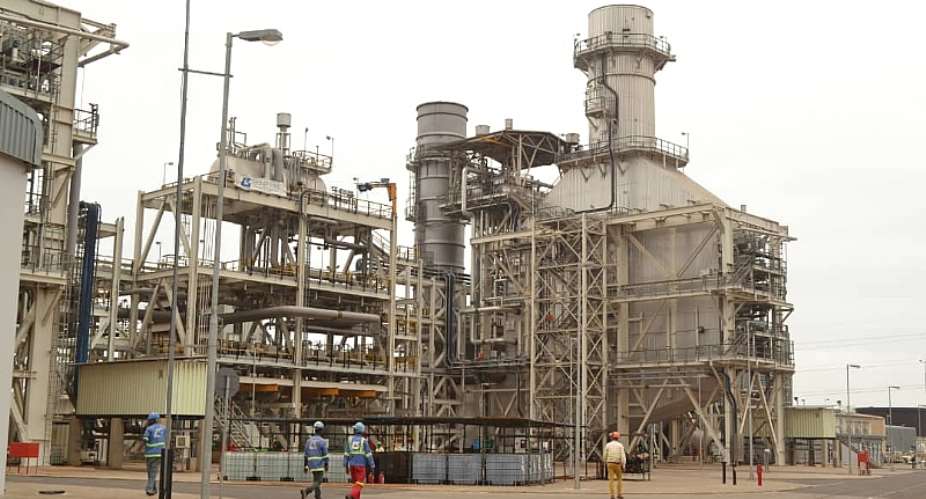Debt at various levels remains a key concern for stakeholders in the energy sector. This has been the result of inefficient policy decisions and the poor governance of the institutions in the sector over the years.
These are four critical areas that stakeholders will be eying in the 2022 budget presentation.
IPP debt
The government owes Independent Power Producers some GHS 1 billion which has been linked to power challenges because of constraints on power generation and distribution. A year ago, the Chamber of Independent Power Producers, Distributors, and Bulk Consumers threatened to withdraw services to the Ghana Grid Company (GRIDCo) over these debts.
Excess Gas Supply
About 64 percent of gas produced in 2020 was not utilized. In the case of Sankofa gas, where the gas is contracted on a take or pay basis, 20 percent of gas produced was unutilized resulting in the continuous payment for unutilized gas.
Meanwhile, the producing fields flared the highest amount of gas in the history of operations in 2020. The case is no different from the first half of 2021 where about 58 percent of the gas produced was unutilized, with about 42 percent being put back in. The government's decision to go ahead with Liquified Natural Gas (LNG) importation would only result in excess gas supply, which would create significant pressure on the budget to account for the take-or-pay commitments.
Excess Power Capacity
The government has consistently indicated over the last four years that it is reviewing the PPAs that occasioned the excess capacity charges with the objective of reducing the associated payments. US$1 billion out of the US$ 3 billion Eurobond issued by the government in 2020 was to support the Ghana Infrastructure Investment Fund (GIIF) to refinance the renegotiated Power Purchase Agreements (PPA). This allocation created an impression that government had concluded on the renegotiation, for which the US$1 billion debt was procured.
This raises concerns with the timelines for the renegotiation and the cost implications for the delays. A year on, estimated interest payments on the US$1 billion bond amount to about US$80 million. If negotiations delay till the end of 2021, an additional US$80 million will be paid, bringing the total interest payments to about US$160 million for no work done.
Debt Accumulation in sector
Over the last decade, the institutions in the energy sector have been saddled with worsening inefficiencies, which has resulted in significant debt accumulation. The debt situation has created a financially unsustainable sector that is unable to honor its payment obligations.
Available data from the 2021 State Ownership Report indicates that in 2019 alone, the energy sector institutions made a net loss of about GHS4.3 billion, a significant increase from the GHS1.7 billion losses made in 2018. Essentially, these institutions generate almost GHS5 billion new debt annually. This is aside from the existing legacy debts that are currently being serviced with about GHS1.6 billion interest payments annually.
---citinewsroom





 Supreme court declares payment of wages to spouses of President, Vice President ...
Supreme court declares payment of wages to spouses of President, Vice President ...
 Publish full KPMG report on SML-GRA contract – Bright Simons to Akufo-Addo
Publish full KPMG report on SML-GRA contract – Bright Simons to Akufo-Addo
 Kumasi International Airport to begin full operations by end of June
Kumasi International Airport to begin full operations by end of June
 Election 2024: Our ‘real challenge’ is getting ‘un-bothered’ youth to vote – Abu...
Election 2024: Our ‘real challenge’ is getting ‘un-bothered’ youth to vote – Abu...
 [Full text] Findings and recommendations by KPMG on SML-GRA contract
[Full text] Findings and recommendations by KPMG on SML-GRA contract
 Renegotiate SML contract – Akufo-Addo to GRA, Finance Ministry
Renegotiate SML contract – Akufo-Addo to GRA, Finance Ministry
 J.B Danquah-Adu murder trial: Sexy Dondon to Subpoena Ken Agyapong, Ursula Owusu
J.B Danquah-Adu murder trial: Sexy Dondon to Subpoena Ken Agyapong, Ursula Owusu
 Galamsey: Five Burkinabes jailed 20 years each for mining
Galamsey: Five Burkinabes jailed 20 years each for mining
 'It's no crime' – Abu Sakara defends Alan's exit from NPP
'It's no crime' – Abu Sakara defends Alan's exit from NPP
 'We know all your houses, pay your bills now or we’ll disconnect you; we're all ...
'We know all your houses, pay your bills now or we’ll disconnect you; we're all ...
